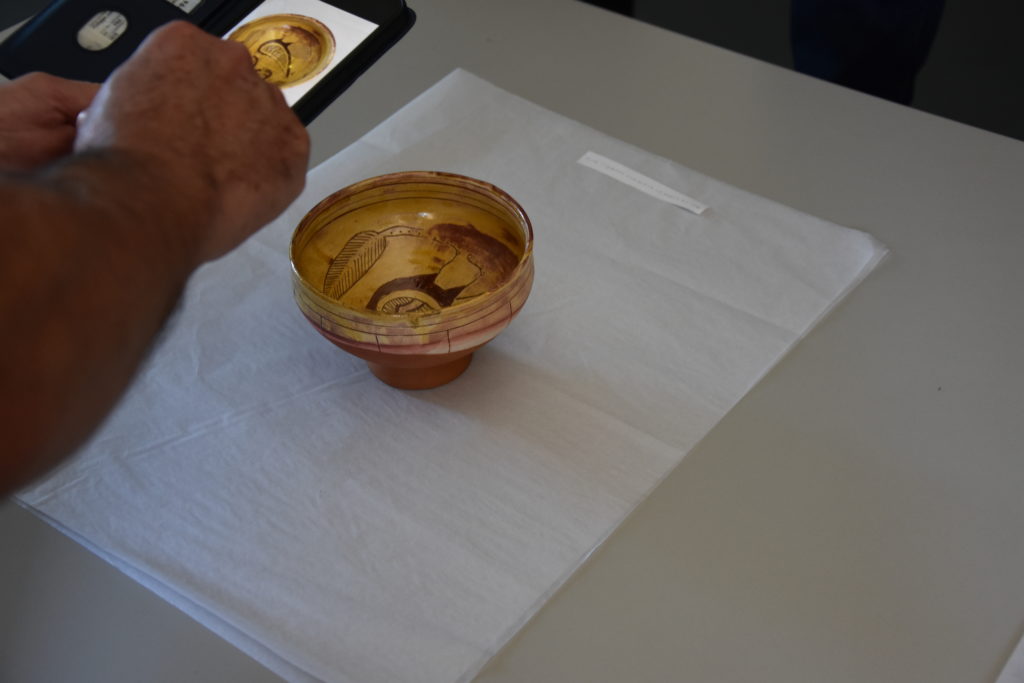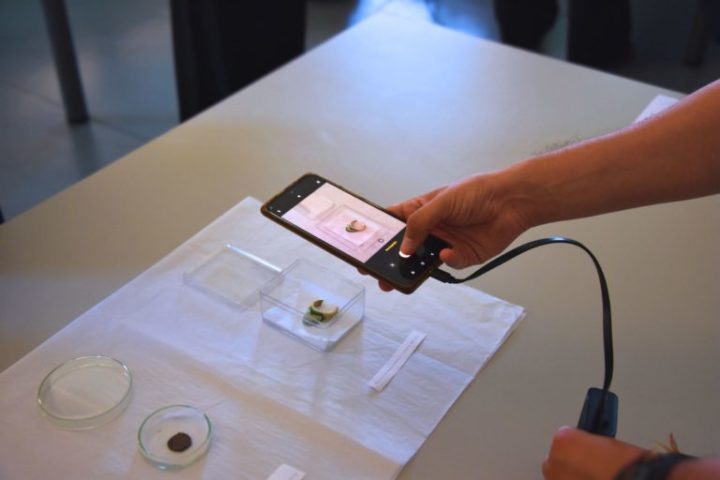Since its foundation in 1946, ICOM has been deeply committed to combating the illicit trafficking of cultural property. Through numerous initiatives, projects, and tools—including the emblematic Red Lists—ICOM has played a key role in protecting cultural heritage. Today, this commitment enters a new phase by embracing innovative technologies to enhance heritage protection (see the article ICOM & the fight against the traffic of cultural goods: between tradition and innovation).
Museums as testing grounds in ANCHISE
As both an organisation and a network of museum professionals, ICOM, is actively involved in ANCHISE – Applying New solutions for Cultural Heritage protection by Innovative, Scientific, social and economic Engagement – together with 14 partner organisations, including universities, research centres, high-tech companies, and law enforcement agencies, under the coordination of the Ecole française d’Athènes (EFA).
ANCHISE is unique in its comprehensive approach to applying innovative solutions to the evolving reality of the illicit trafficking of cultural heritage. Through its multidisciplinary approach, the project integrates social and human sciences to provide contextual understanding as a basis for the technological development of the tools. The tools under development benefit directly from the insights of the professional communities that will use them: archaeologists, law enforcement and museum professionals.
Thanks to this approach, ANCHISE seeks to develop replicable methods and tools that connect heritage professionals with cutting-edge technology. By aligning the specific needs of cultural heritage protection with innovative solutions, ANCHISE aims to create practical tools that will strengthen efforts to combat illicit trafficking.
One of the distinctive features of ANCHISE is that the six technological tools developed in the project are being tested in different environments: archaeological sites, border posts (for law enforcement) and museums, with the relevant professionals providing crucial feedback at each stage. This iterative process allows for continuous refinement, ensuring that the tools meet the practical needs of professionals involved in the fight against the illicit trafficking of cultural heritage. All the tools, except for the ICONEM monitoring toolbox – intended for archaeologists – could be useful for museum professionals and, for this reason, are being tested in the organised demonstration phases with the participation of museum professionals from different horizons (in terms of position, country, speciality and museum typology).

As part of the ANCHISE project, the ICOM Secretariat, through its Heritage Protection Department, has been designated to coordinate the testing of the tools in museums. To this end, ICOM is working closely with the other project partners – including the coordinating organisation (EFA), research centres and technology companies – while drawing on its extensive network of museum professionals. In particular, it works closely with relevant ICOM National Committees (such as those in Greece, Sweden, Bosnia and Herzegovina), relying on their expertise in combating illicit trafficking of cultural goods in the region and their strong links with relevant heritage institutions and stakeholders.
So far, a first demonstration phase of the tools was successfully carried out in Greece in September 2024, in close collaboration with ICOM Greece and the Museum of Byzantine Culture of Thessaloniki (MBC), through its General Director Dr. Agathoniki Tsilipakou, and all the museum staff who actively contributed to the success of the demonstration, being particularly involved in the demonstration of the Arte-fact and Kiku-Mon tools, both of which are based on image recognition. As an example, for the demonstration of the Arte-fact tool, 5 objects from the MBC were displayed in the workshop room under the supervision of museum curators, allowing participants to take pictures of them and test the Arte-fact tool’s image recognition and other features.
 |
 |
| Testing of the Arte-Fact tool – PARCS, photographing objects from the Museum of Byzantine Culture © ANCHISE Project | |
This demonstration allowed museum professionals from Greece and other countries such as Sweden, France and Bosnia-Herzegovina to test the tools in realistic situations and, most importantly, to give their feedback in order to adapt the tools to their needs during the project and in future demonstration phases.
Looking ahead: museums as catalysts of innovation
The next phases of ANCHISE will include further testing in different museum settings, ensuring that the tools are refined based on this first feedback from museum professionals. ICOM will continue to play a key role in connecting its global network to these developments, and in fostering dialogue between practitioners and innovators.
This process is also part of ICOM’s vision. In recent years ICOM has focused on innovation and the use of new technologies and has made this a key theme of its upcoming General Conference in Dubai at the end of the year. Indeed, ICOM Dubai 2025 will highlight how museums can lead the way in innovation, using technology to transform cultural preservation and strengthen community engagement in a rapidly evolving digital landscape.
As technology increasingly shapes the future of museum work, ANCHISE is an example of how cross-sector collaboration can lead to innovative solutions and shows that innovation is not only an idea, but a tangible reality for museum professionals.
Useful resources:
- ANCHISE website: https://www.anchise.eu/
- ANCHISE article on the first demonstration of the tools: https://www.anchise.eu/post/the-first-anchise-demonstration-was-a-success
- ANCHISE social media: LinkedIn, X, YouTube
- ANCHISE toolkit simply explained: Flyers Tech Simple – anchise
- ANCHISE Policy Brief
